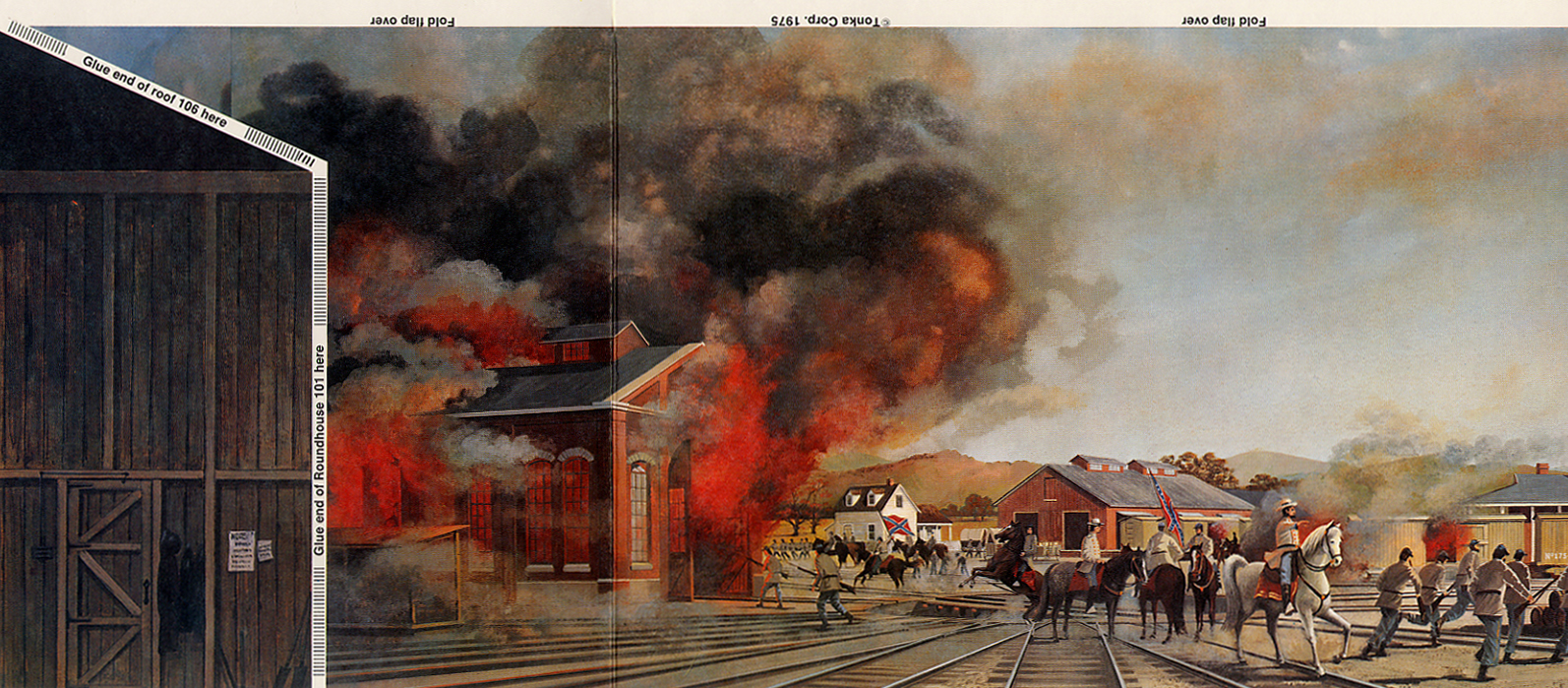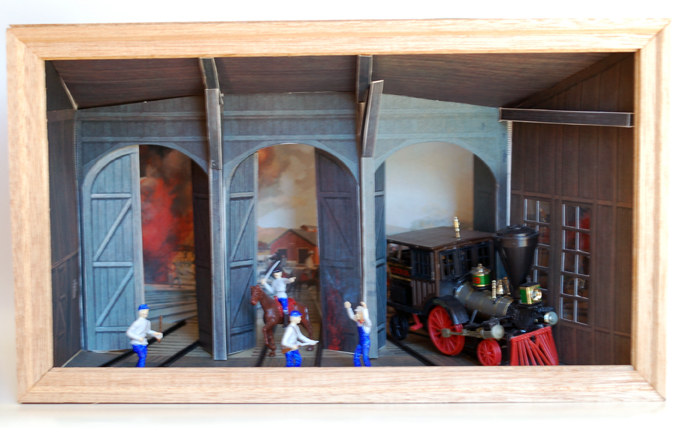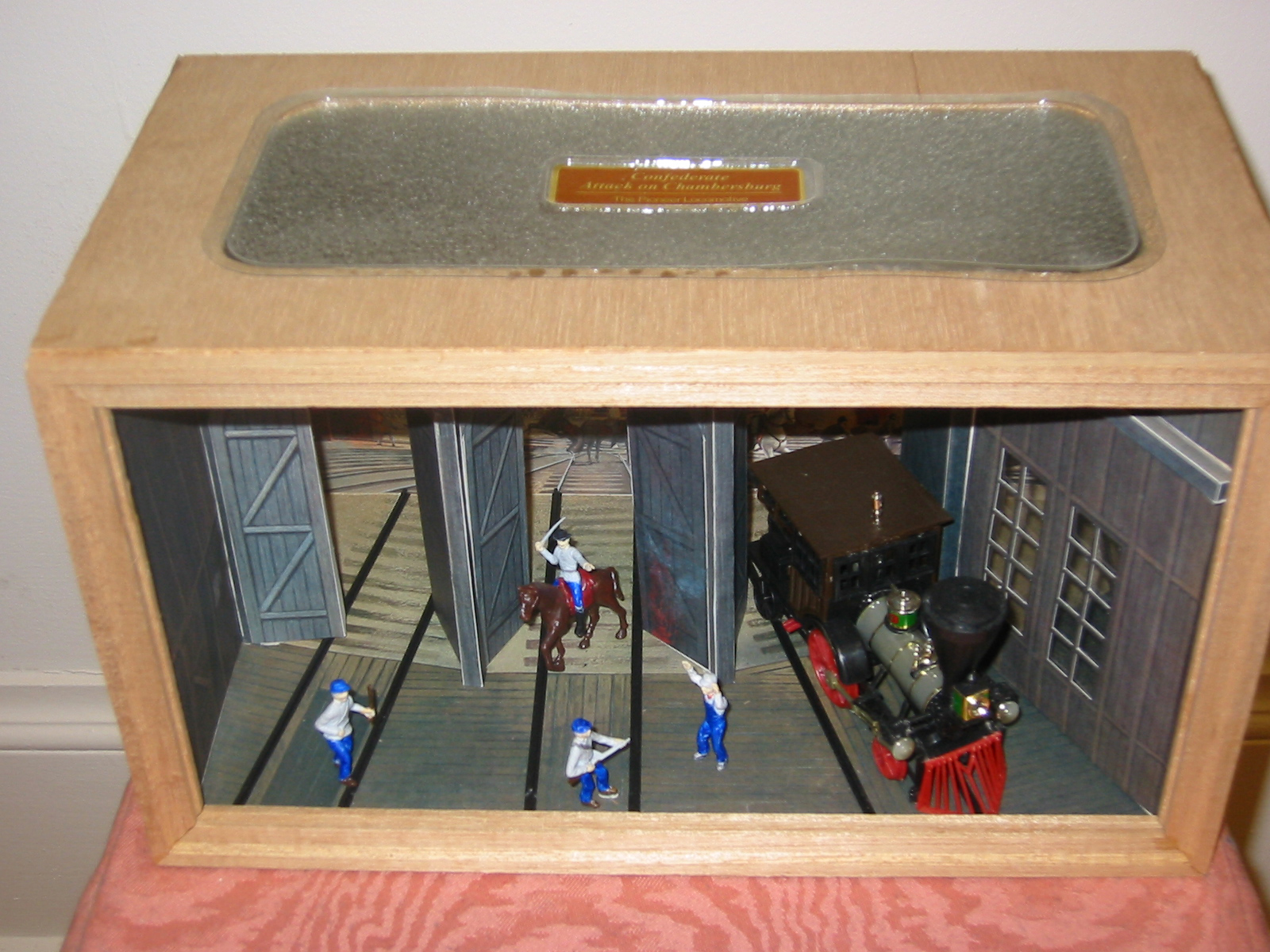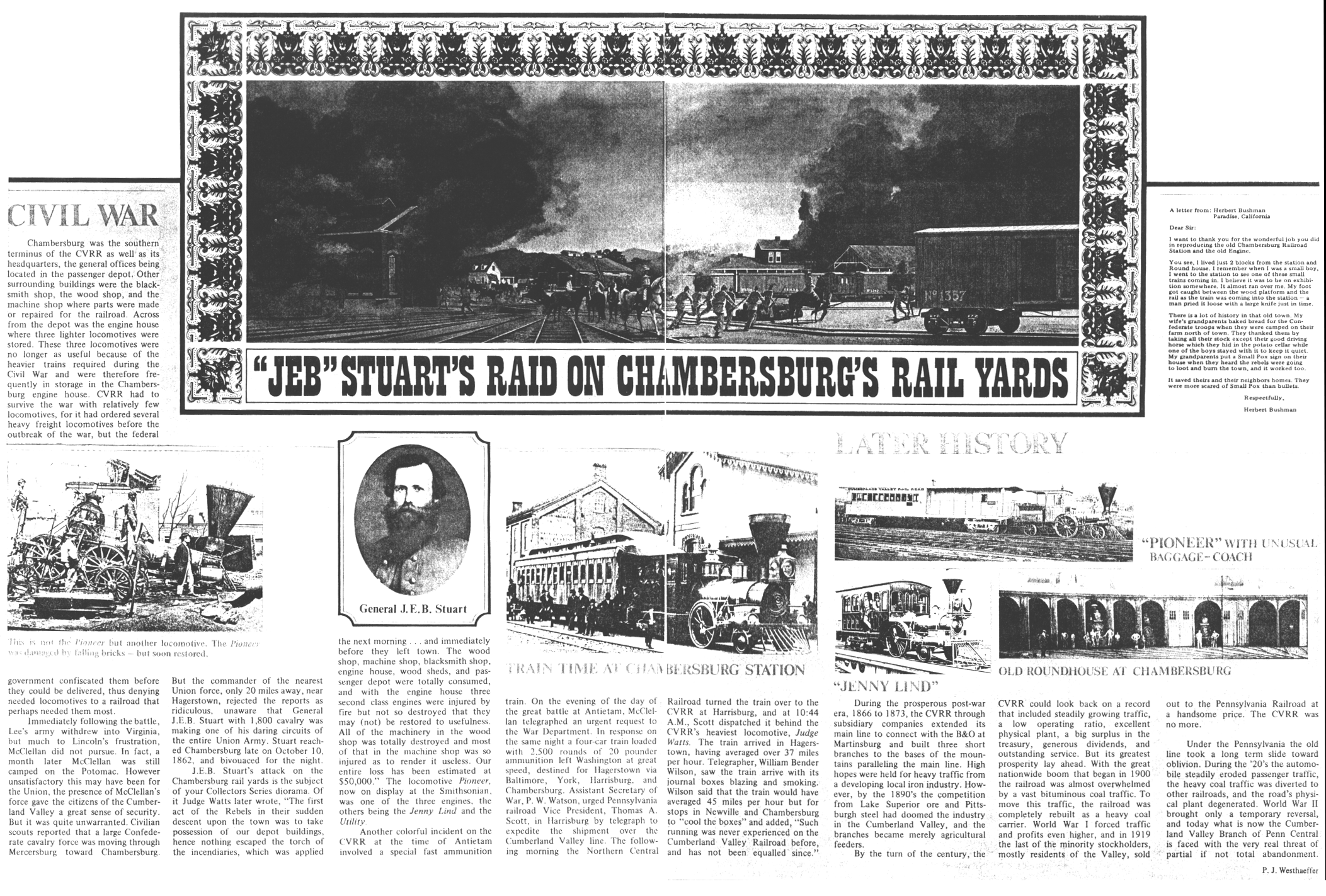

Around 1975, the Civil War landscape of Chambersburg found representation in a mass-marketed, miniature diorama of Confederate troops menacing a locomotive in the town's railroad roundhouse. This section presents images of the completed diorama, some of its component parts, and accompanying literature. The process of assembling the kit's locomotive model and miniature roundhouse simulated actual historical research, in a faux, "wartime" newspaper, as well as simulating actual locomotive-fabrication and roundhouse-construction. |
|
In the 1970's, a partnership between the Smithsonian Institution and a national toy corporation produced at least six dioramas, each built around a model of a transportation artifact in the National Museum of History and Technology. Chambersburg and the locomotive Pioneer inspired two of the dioramas, both in 1/48th scale, one of which depicted the locomotive in front of Chambersburg's Cumberland Valley Railroad (CVRR) passenger station in 1853.
The other Pioneer diorama bore the title "Confederate Attack on Chambersburg." It portrayed Confederate General J.E.B. Stuart's cavalrymen approaching the locomotive in a CVRR roundhouse as they burned railyard facilities on October 10, 1862. After the real Pioneer was damaged by Stuart's raiders that day, CVRR crews repaired the locomotive and returned it to a markedly varied career. Pioneer's owners, capitalizing on its dramatic resurrection from the raid, converted it to a touring historical relic around the turn of the twentieth century. Pioneer appeared in: the Sesquicentennial of Carlisle, Pennsylvania in 1901, the Louisiana Purchase Exposition in 1904, the West Virginia Semicentennial in 1913, the Baltimore & Ohio Railroad centennial pageant in 1927, the World's Fair in 1933, the Chicago Railroad Fair in 1947, and the Virginia Apple Blossom Festival annually in 1914-1925.
The Smithsonian Institution eventually acquired Pioneer. After restoring the locomotive, curators placed it on display in the National Museum of History and Technology in 1961. In 1964, the Smithsonian published an illustrated report on the locomotive's history and physical dimensions and alterations. Around 1975, the Smithsonian and the toy corporation marketed the "Confederate Attack on Chambersburg" diorama. Its designers tailored the kit to consumers at least ten years of age.
Each diorama builder assembled plastic components into a miniature model of Pioneer; folded and aligned a cardboard model of a roundhouse interior; laid plastic track on the roundhouse floor; and painted the plastic figures of three Confederate cavalrymen and a surrendering, civilian railroad employee. 
Each builder also folded and aligned a cardboard, landscape backdrop of the railyard and its burning buildings.  The next steps included assembling wooden panels into an open-ended box and affixing within it Pioneer, the figures, the roundhouse interior, and the railyard landscape.  The final steps entailed enclosing the box's open side with a transparent Plexiglas window and creating an additional light source with an opaque Plexiglas panel fitted to the box's top. Each diorama kit also contained a series of secondary-source historical articles as well as advertisements for other dioramas in the series.
 The articles and advertisements appeared in the form of a Chambersburg "newspaper" dated October 10, 1862. This faux document offered each diorama-builder a sense of performing the primary-source research crucial to the actual Pioneer's restoration and exhibition by Smithsonian curators.
|
